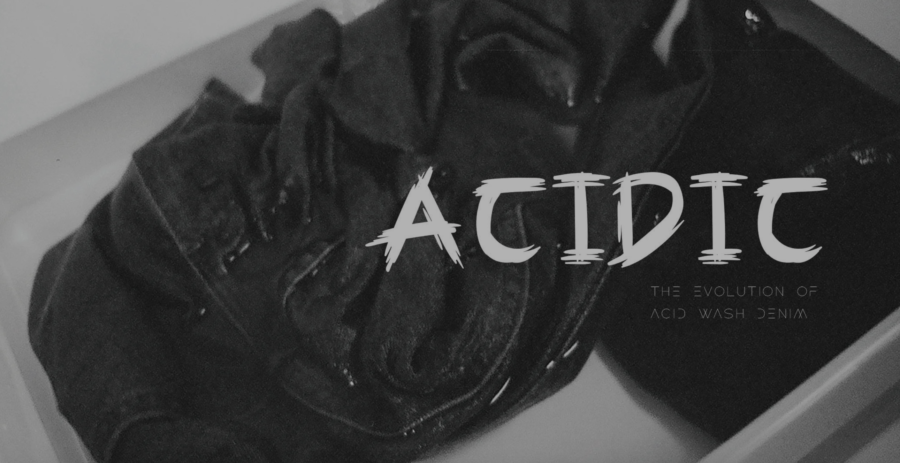Shain Thomas doesn’t fit the TCU stereotype.
Yes, like 73 percent of TCU students, Thomas is white.
But he’s also Scottish. And liberal. And Jewish. And bisexual. And he’s 38.
Born in California and raised in Scotland, Thomas went on a 20-year education hiatus, traveled the world then settled down east of Dallas.
There, he enrolled in Richland Community College, earned his associate’s degree and began looking at four-year schools.
TCU caught his eye, he applied and was accepted last year.
Thomas isn’t naïve. He knows he’s an outlier on the diversity grid. But he also knew that before he came to TCU.
“The general perception of TCU was that it is Anglo-Saxon, white rich kids, daddy’s princesses and mothers’ boys,” he said. “It doesn’t seem to be as diverse as I would like, but there is some diversity here.”
But that lack of diversity doesn’t stop Thomas from achieving his end goal.
“Even though there seems to be a lack of diversity, I don’t let that get in the way of my doing what I need to do,” he said. “The reason I’m here is to get a specific degree and move on to the next stage in life.”
And, of course, the academic benefits made the university a choice Thomas couldn’t pass up, even if he did have reservations regarding the on-campus diversity.
“The standard of education is very high,” said Thomas, who was also accepted to Columbia and Princeton. “The pluses far outweigh the minuses.”
But there are minuses, diversity-wise. Glaring ones, too.
According to a recent U.S. News and World report, TCU ranks near the bottom among national universities in diversity.
The report, which measures a school’s level of diversity by determining how likely students at the school will interact with races apart from their own, ranked each university by giving it a score on a scale of zero to one. The higher the score, the higher level of diversity.
Of the universities scored, TCU ranked 168th, registering a .30 diversity index. To put that number in perspective, Rutgers University in Newark, N.J. ranked first with a score of .76.
But not only did TCU rank low on a national level, the university ranked 19th among the 21 Texas universities on the list. The University of Houston scored the highest number (.75) among Texas schools, ranking second nationally.
The most revealing statistic, though, may have been TCU’s poor showing when stacked against comparable private universities in the region.
SMU, registered a diversity index rating of .30 while Baylor, a slightly larger private institution, scored even higher at .51 on the scale.
Chasity Shorts sees this same problem.
Shorts, the president of the National Association of Colored Women chapter on campus, said the biggest issue pertaining to diversity isn’t the number of minorities on campus but rather how and how often minority and majority groups interact.
Most students are too hesitant to step out of their comfort zone, Shorts said.
“It’s an unwillingness to learn about each other,” Shorts said. “For the most part, everyone stays separated. We don’t mix it up too often.”
Shorts, a senior, who grew up in Fort Worth, said that level of interaction hasn’t increased much since she came to TCU four years ago.
“I just feel like TCU is still just TCU,” Shorts said. “When you think about (TCU), you still don’t really think about minorities and the minority organizations.”
Jason Wallace knows the numbers.
And, as program coordinator for TCU Intercultural and Inclusiveness Services, he said they don’t surprise him.
“We’re pretty aware,” Wallace said of TCU’s low diversity rating. “I can’t say I was surprised by the numbers by the report, but I think it’s something TCU is working towards getting better.”
Wallace, who works with minority students, organizing events and programs geared toward fostering inclusiveness, said the report keyed in on several cross-cultural backgrounds and the interactions between those students, something TCU is lacking at the moment.
“There’s a lot of different segments,” he said. “And that’s not just race and ethnicity. Greeks typically hang out with Greeks. Older, non-traditional students tend to hang out with non-traditional students.”
Wallace, who also received both his bachelor’s and master’s from the university, said the level of interaction between students of different backgrounds is getting better.
“I’m a TCU alum and I can say personally that it has improved since I was in school and I’ve only been out for 3 years,” he said. “I can already see improvements as far as interaction amongst students and the diversity of programming that takes place on campus. Still, the work is far from over.”
Dean of Admission Ray Brown knows the numbers, too.
He’s said reminded of them every time he drives through downtown Fort Worth.
The brick streets of Sundance Square, laid down in the early-1930s, were a product of the Works Project Administration, the cornerstone agency of the New Deal, President Franklin Delano Roosevelt’s program to salvage a depressed economy.
But Brown isn’t FDR. He isn’t facing an ailing nation and he isn’t juggling the task of feeding millions with a war looming in Europe.
But, he said, he can relate to Roosevelt, who tried everything during the Great Depression.
“In 1933, there were so many things wrong with this country, that FDR tried all sorts of things, knowing a whole bunch of them were going to fail, but that some of them wouldn’t,” he said. “I sort of thought about that when I got here. You’ve got an idea to affect a change in the number of students of color here, we’re going to try it, knowing full well that some of them were going to fail.”
But some of them haven’t, he said.
The Community Scholars program has been a successful diversity initiative. The program is geared toward providing inner-city students in the Dallas/Fort Worth metroplex a way to pay for college.
Brown described the program as a “money where your mouth is,” program because it provides more than $1 million in scholarships to its recipients.
It was the brainchild of former university chancellor Michael Ferrari, who agreed to take the job for five years in 1998 with the intention of solving TCU’s diversity problem, Brown said.
Ferrari’s mindset is what drew Brown away from the University of Marquette in 2000.
Then, came other initiatives such as Camp College, a statewide summer program hosted at TCU designed as a week-long boot camp on the college admission process.
Along the way, the number of minorities enrolled on campus has grown.
In 1999, TCU was 9 percent minority, Brown said.
Since then, Brown said that number has increased to 20 percent, two points short of the university’s target goal.
“It’s working, a little slower than we had hope, but it’s working,” he said.
But solving TCU’s diversity riddle, at least on a statistical level, isn’t simply a matter of admitting more students of color, Brown said.
According to Peterson’s Competitive Colleges, TCU’s percentage of minorities in its fall, 2007 freshman class was similar to, and in some cases better than, not only to schools in the region, but also to colleges on the East Coast, including Ivy League schools.
TCU’s 2007 freshman class was 5 percent black, which was slightly higher than that of SMU in Dallas (4.9 percent) and Trinity University in San Antonio (3.6).
State schools Texas A&M (2.9), Texas Tech (4.0) and Texas (4.6) all had lower percentages of black students than TCU that year.
But improving the university’s overall diversity ratings, which would mean improving interaction between races, starts with re-vamping the perception of the university, Brown said.
That’s changing, too.
“Once upon a time, you could go to the local neighborhoods and talk to them about TCU and you would find people saying ‘no, they don’t want me, I’m the wrong color,’” Brown said. “You don’t hear that anymore.”
Brown said it would be hard to find a university that has tried more over the past 12 years to increase the level of campus diversity.
“I would challenge anyone to find a school that is doing more to enhance diversity,” he said. “We do stuff on the local level. We do stuff on the state level. And we do stuff on the national level
Still, he isn’t satisfied, even if the university is doing all it can.
“I’m comfortable with what we’re doing,” he said. “I’m not comfortable with the results.”
But the pressure Brown said he feels to constantly improve campus diversity, try new programs and change the perception of TCU isn’t coming from administration high-ups.
It’s coming from him.
“It’s a character flaw, I’m sure, that I’m someone who’ll never be satisfied with any part of my life,” he said. “I love my life, I love my family, I love where I work. But I want to be better.”
Fort Worth’s Stop Six neighborhood is closer to campus than one might think.
Drive east on Berry Street past the Whataburger, cross the railroad tracks, over Interstate 35, continue straight for 15 mintues and you’re there..
The tree-lined curbs of University Drive and the streets of Stop Six may be close in distance, but the sand-brick bubble of TCU and the low-income, east Fort Worth neighborhood might as well be a world away, the economic and educational disparities between the two communities severing a seemingly un-bridgeable gap.
Walter Sanders knows that gap.
That’s because he’s crossed it.
Sanders, who grew up in Stop Six and attended Dunbar High School, is a senior accounting major and a mCommunity Scholar.
He’s also an honor student. And a Neely Fellow. And an Orientation Student Assistant. And, last fall, he was voted Mr. TCU.
In high school, Sanders said he was a neighborhood rarity—he was in pursuit of a college degree and doing it with the backing of two parents who both attended college.
According to a Jan. 3, 2011 article in the Fort Worth Star-Telegram, Dunbar, located in the heart of Stop Six, has 763 students, 84 percent of whom are African-American and 64 percent of whom are experiencing poverty.
Sanders said college wasn’t feasible for most of his classmates, many of whom, in addition to being poor, came from families where education wasn’t a priority.
“A lot of people at my school, college wasn’t even an option for them,” he said. “Their parents never went to college, never even thought about college. A lot of them are high school dropouts. A lot of times, college is not a choice for a lot of them. Even if it was, they don’t have the financial support to go to college.”
Sanders found his way out through Community Scholars, which, among other things, has helped pay for the majority of Sanders’ school costs, a benefit he couldn’t have gone without.
“I really don’t know if I’d be here [without Community Scholars], to be honest,” he said.
But on top of providing a way for low-income students to pay for college, programs like Community Scholars are designed to change the perception of the university within inner-city communities.
Sanders said the perceived economic and ideological stereotypes of TCU clash with those of the black community. TCU, Sanders said, is viewed by students in communities like Stop Six as an unreachable, not-for-me pedestal, an almost that isn’t thought more or less of, but rather not thought of at all, even by those interested in college.
“On top of being rich and white and conservative, [TCU] is looked at as being unattainable.” he said. “Because my school’s predominantly black, if they did go to college, a lot of them went to Historically Black Colleges and Universities.”
Whether it’s justified or not, HBCUs, Sanders said, offer something TCU and other private schools cannot: a familiar atmosphere.
“I guess it’s just a more friendly type of environment they were looking for,” he said. “I wouldn’t say it’s as academically challenging, but it’s manageable. It’s like ‘Oh, there’s a predominantly black school so people who look like me can go there and be successful.’”
But Sanders said that perception is changing, slowly but surely.
“It’s a slow-going process,” he said. “But it’s definitely changing.”





